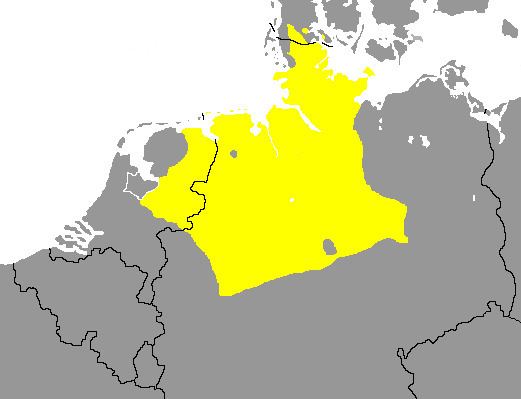ISO 639-2 nds | Glottolog None | |
 | ||
Native to Germany, Netherlands, Denmark Native speakers 4 million (date missing) Language family Indo-European
Germanic
West Germanic
Low German
West Low German ISO 639-3 Variously:
wep – Westphalian
nds – (partial)
frs – Eastern Frisian
gos – Gronings
stl – Stellingwerfs
drt – Drents
twd – Twents
act – Achterhoeks
sdz – Sallands
vel – Veluws | ||
West Low German, also known as Low Saxon (German: Niedersächsisch or German: Westniederdeutsch; literally: Nether-saxon; Low German: Nedersassisch, Nedersaksies, Platduuts, Plat(t); Dutch: Nedersaksisch; ) is a group of Low German (also Low Saxon; German: Niederdeutsch or Plattdeutsch, Dutch: Nederduits) dialects spoken in parts of the Netherlands, northwestern Germany and southern Denmark. It is one of two groups of mutually intelligible dialects, the other being East Low German dialects.
Contents
Extent
The language area comprises the North German states of Lower Saxony, North Rhine-Westphalia (the Westphalian part), Bremen, Hamburg, Schleswig-Holstein and Saxony-Anhalt (the northwestern areas around Magdeburg) as well as the northeast of The Netherlands (i.e. Dutch Low Saxon, spoken in Groningen, Drenthe, Overijssel and northern Gelderland) and the Schleswigsch dialect spoken by the North Schleswig Germans in the southernmost part of Denmark.
In the south the Benrath line and Uerdingen line isoglosses form the border with the area, where West Central German variants of High German are spoken.
Germany
The Netherlands
While Dutch is classified as a Low Franconian language, the Dutch Low Saxon varieties, which are also defined as Dutch dialects, form a dialect continuum with the Westphalian language. They consist of:
